Mention the word “testosterone,” and most everyone thinks of sexual health. While it’s true your testosterone level has a big influence on sexual development and function, that’s just part of what this hormone does. Testosterone affects many other bodily functions, too. That means if your testosterone levels are low, you can wind up experiencing a lot of unpleasant symptoms.
Fortunately, testosterone replacement therapy can help. The team at Jersey Integrative Health and Wellness offers several types of hormone replacement therapy (HRT) to help patients in Wayne, and Jersey City, New Jersey, get the customized treatment they need to help them feel their best.
Symptoms of low testosterone
Your testosterone levels drop naturally as part of the aging process. In fact, plenty of men are shocked to learn their testosterone levels start to decline while they’re still in their 20s.
The decline in testosterone production tends to be gradual, which means that at first, it’s easy to ignore the symptoms associated with low testosterone (or low T). As a result, plenty of men accept these changes as “just part of getting older,” without realizing that HRT could be just what they need to feel their best again.
Testosterone plays a big role in lots of functions. If your testosterone levels are low, you could have symptoms like:
Weight gain and problems losing weight
- Muscle loss
- Low libido
- Depression
- Sleep problems
- Fatigue
- Irritability or moodiness
- Problems concentrating
- Erectile dysfunction
Most men don’t have all these symptoms, and as noted earlier, the symptoms can also be very subtle, at least initially.
5 HRT methods: Select the right one for you
HRT can be a great way to supplement your natural hormone levels so you feel more like yourself again. Testosterone can be administered in different ways. Choosing the method that suits your lifestyle and your preferences is the best way to make sure your therapy stays on track and effective.
Implants (pellets)
Testosterone implants are small pellets designed to release a small amount of testosterone in a steady dosage over a period of about 3-6 months. The implant is inserted under your skin in a simple in-office injection-based procedure that takes just a few minutes. Implants typically are placed near your hip. The implant can be removed and replaced using the same technique.
Injections
Testosterone injections are administered directly to your muscle tissue, where the hormones can be absorbed readily into your bloodstream. Most shots are given either in your buttocks or in your thigh muscles.
Skin patch
Also called a transdermal patch, a skin patch stays on your skin where it releases a slow, steady stream of testosterone. The hormone is absorbed through your skin and into your bloodstream. Skin patches typically are worn for 24 hours, then replaced with a new patch.
Mouth patch
Sometimes called a buccal patch, this method allows you to apply testosterone to your gum tissue. For most types of dosing, gum patches are applied (and removed) twice each day.
Gel
Testosterone gels are applied to your skin twice a day, in most cases. Some pump applicators dispense your precise dose for you, so there’s no need to “guesstimate.”
Fight low T symptoms with customized HRT
Symptoms of low T can begin in your 20s, getting worse (sometimes much worse) as you age. If you have any symptoms of low T, don’t ignore them. A custom-tailored HRT regimen could be just what you need to feel more energized and healthier. To learn more about HRT, call Jersey Integrative Health and Wellness or use our online form to request an appointment today.


